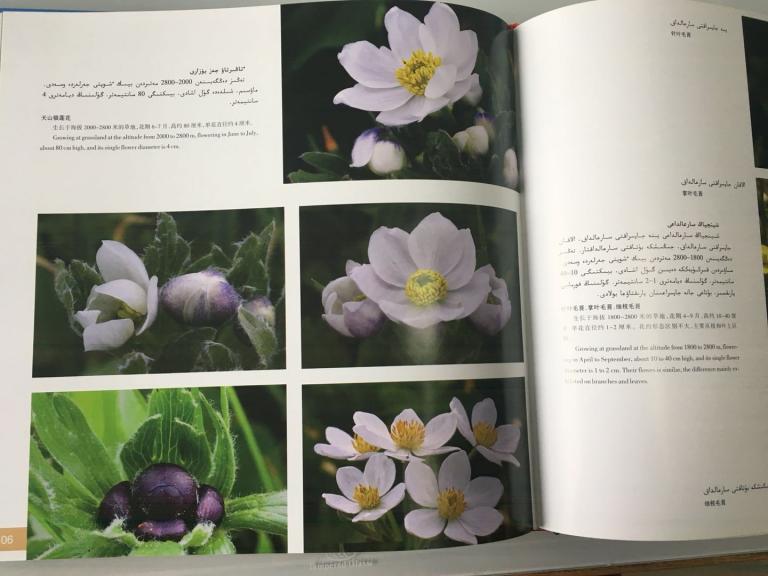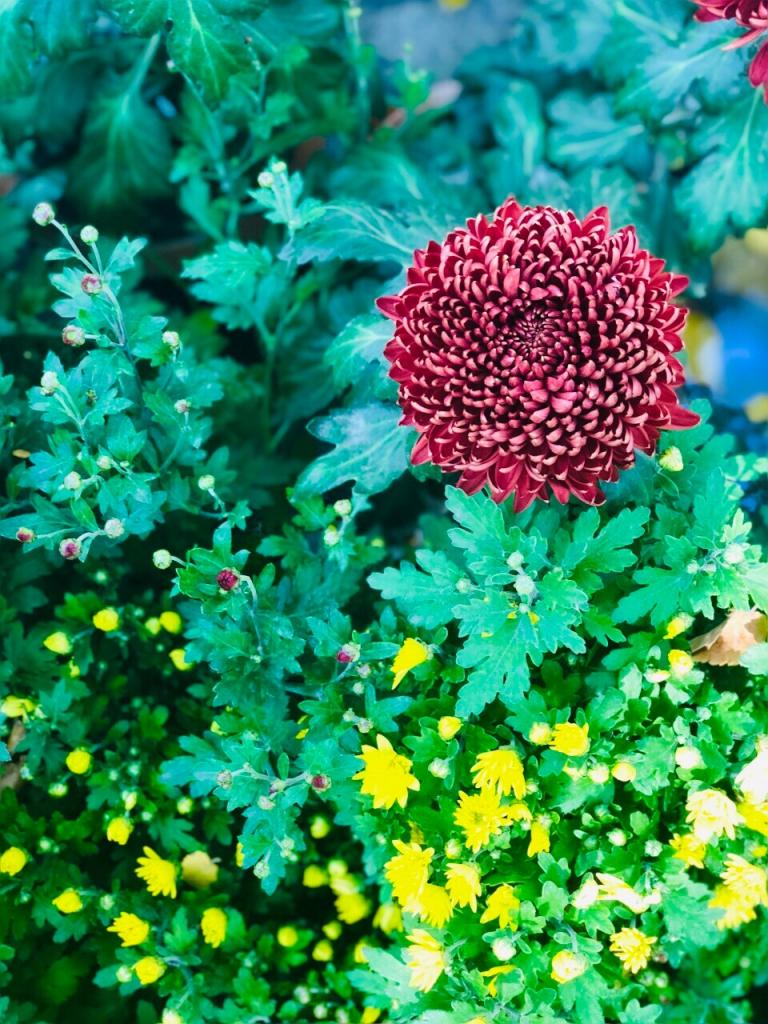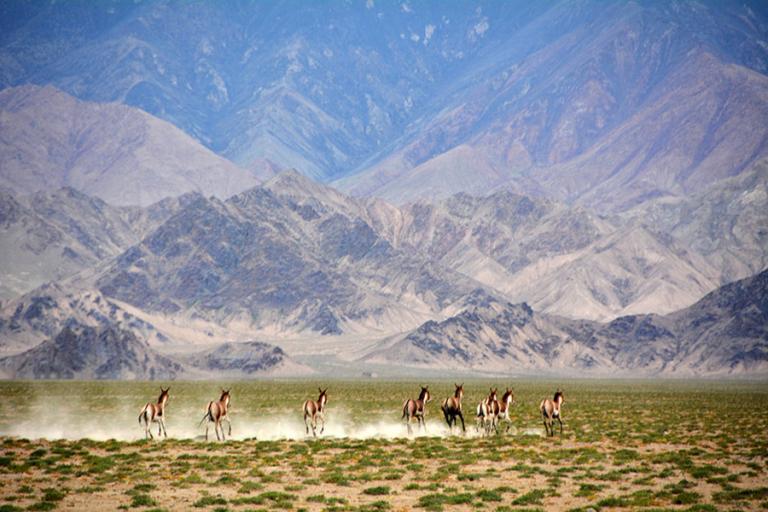Wild plants in xinjiang
8 min readThe geographical environment and ecological natural conditions of Xinjiang represent the feature of diversity,which has nurtured rich and unique plant resources.There are more than 4,100 kinds of higher wild plants in Xin jiang with about 100 endemic species,including ferns of 16families,23 genus and 45 species,gymnosperm of 3 families,10 genus and 41 species,and angiosperm 118 families,825 genus and 3,258 species.Eight kinds have been included in the national key protected wild plants,among which,one kind is the first-class national key protected wild plants,and seven are the second-class national key protected wild plants.The first batch of key protected wild plants in Xinjiang is of 47 families,128 species,and 1 variant,among which,82 kinds belong to the first-class national key protected wild plants,and 46 belong to the second-class national key protected wild plants.

Malus Sieversi
Malus Sieversii,also called Saiweishi Apple,is a kind of deciduous tree growing to 15m high.The canopy is open and the bark is dark gray with down on twigs;leaves are in shape of lanceolate or ellipse with crenation at the edge.Petals are pink-white of corymbs.There are much variant types of fruits,including more than 80 wild types,such as green cones,yellow cones,red cones,green long fruit,yellow long fruit and red long fruit.The pulp also has various types of red,yellow,green,and white and so on.
Growing in the middle and low slopes of mountains,valleys,shady and semi-shady slopes at the altitude of 1,100 to 1,700 meters,Malus Sieversii favors the warm and humid climate,and in lli River Valley with an annual precipitation of 500 to 600 mm,they constitutes the mountain deciduous broadleaved forest belt at the shady and semi-shady slopes or valleys at the lower part of the middle mountain belt, and upper part of the lower mountain belt; but in the east of Barluk Mountain, the western mountain regions of Junggar, and the shady and semi-shady slopes or valleys with an annual precipitation of only 300 mm, it is mainly in block or strip like distribution. Malus Sieversi prefers light very much, intolerant of shade, and its seedlings are rare with poor natural regeneration in the woods with a canopy density of over 0.7. The flowering phase is 4 to 6 months, and the fruiting phase is 8 to 10 months.
The fruit tastes puckery and sweet and generally should not be eaten directly; it can be processed into fruit leather, fruit wine, jam, juice and other delicious foods, which are beneficial to human health with high nutrition and less pollution. In addition, the trees can also be used as ornamental trees for urban greening.
Malus Sieversii has played an important role in the apple cultivation history, and it is the direct ancestor of some cultivars. It is the relict plant of the ancient Mediterranean temperate deciduous forest, and the endangered rare genetic resources. Tianshan original deciduous broadleaf wild fruit forest region is formed mainly by Malus Sieversii trees, which is the only natural gene pool of economic forest resources in China, and also the important part of the world wild apple gene pool, having important scientific research andprotection value. It is of certain scientific value for revealing the origin and floristic changes of mountain broad-leaved forest at the desert regions in central Asia. In recent years, due to human activity interference and pests, the natural amount of Malus Sieversii and distribution area have been dwindling, with the total area being only 101.3km² at hilly area on both sides of lli River Valley, and on both sides of Talbahetai mountain in Tacheng Prefecture at the brink of extinction.
Wild walnut
Wild walnut tree is the relic specie of the tertiary period, and the ancestor of today’s walnuts, which is called the “living fossil”walnut by botany circles. The reason why it isfamous is that this precious “living fossil”only forms woods in Gongliu County, Xinjiang. This piece of wild walnut grove is located at the northern part of Yishigelike Mountain, southeast of Gongliu County, It is 13km from the county with a total area of 1,180 hectares; it is the key protected areas of natural resources of autonomous region level, and a national 4A-level scenic spot. There are nearly 10,000 wild walnut trees in the wild walnut ditch, forming a unique landscape in China, which is rare even in the world.
Wild walnut ditch is”Jianggadesayi”in Kazakh. In the mountain valley which is located in a mountain forest of Gongliu County, Ili River Valley, surrounded by mountains in threedirections opening to the west, which can withstand dry heat and cold air, and also accept receive the moist air, there forms the natural environment which is different from the desert and in favor of the growing of grassland trees. Due to the smaller impact of Quaternary glaciers, the mixed coniferous broad leaved forest and broadleaf deciduousforest of the Tertiary period are preserved. The Tertiary period is the oldest of the Cainozoic era, which had lasted about 63 million years since 65 million years ago. At that period, the angiosperm was extremely prosperous. Except the conifers, other gymnosperms had been in recession. Ferns are also greatly reduced, and they are mainlydistributed in warm regions. But there are still so many wild walnut trees in Gongliu County. It is really a miracle!
The wild walnut forest is surrounded by mountains and towering peaks on three sides with verdant pine trees and green grass. During the harvest season, all the walnut trees of lush canopy carry many fruits, bending the branches. Streams flowing across the wood and flowers booming under the trees, the scenery is really unique. The valley is roughly of north-south orientation, the south is higher than the north, and the top is formed by threesub ditches. Such kind of valley is gradually narrowed with the terrain of gradual uplift, contributing to the formation of plentiful orographic rain. In winter, the place is in a strong thermal inversion layer. The unique natural environment of warm and humid makes it a rare tourist destination.
Perhaps it is because the wild walnut ditch is the only extension strap of Siberian taiga in China, the only Continental tundra of Palaearctic Europe-Siberia flora and fauna distribution area, and the important ecological place of preventing the northward movement of Gurbantunggut Desert, that the landscape is entirely different from the natural landscape of deserts, grasslands, forests, and snow-capped mountains, preserving the original pure and mystery, and carrying the memory of history.

Fraxinus Sogdiana Bunge
Fraxinus Sogdiana Bunge is also known as European Fraxinus excelsior or Tianshan white wax, which is a precious relic species of the tertiary temperate broadleaf trees, known as “living fossil of broad-leaved forest”, as well as “Fraxinus insularis”and “Cyclobalanopsis glauca Oersted”. It belongs to Osmanthus family, Paraffin species, and is the unique species in Xin jiang. The tree is tall and beautiful with excellent material, which is a fine species for timber land and agricultural protection forest, and also the first choice for urban greening tree species, mainly distributing at the estuary where Kashgar Riverflows into the lli River. In 1983, the Fraxinus Sogdiana Bunge Natural Conservation Area was founded in lli, which is the only Conservation Area for natural Fraxinus Sogdiana Bungewood in China.
The trees mainly exist in Gongliu County, Nilka County, and Yining, li Prefecture, growing at an altitude of 400~1,500 m, showing a natural pure forest or mixed distribution both in northern and southern of Xin jiang. They like sunshine and deep moist fertile soil, relatively resistant to drought and wet, and they can also grow normally in the soil with a salt content of 0.5%~0.7%, under the high temperature of 40℃ in summer and the extreme low temperature of-43℃.
Leaves of Fraxinus Sogdiana Bunge are relatively small, which are glossy because they seem coated with a layer of white wax. The branches of saplings are smooth with the height of 1~5 m; the trunks of 10-meter-high trees are gray light; and if the height is about 20 m, the tree is over a hundred years old, whose diameter at breast height will be about 1 meter, and the trunk is straight with fine veins of the bark. They are deciduous trees with round crown, and brown bark cracking vertically. The winter buds are dark green, and twigs are brown or reddish brown with 7~13 leaflets of ovate-lanceolate. The flowering phase is in April, and the fruiting phase is in September.
The Fraxinus Sogdiana Bunge Natural Conservation Area is located at the bank of Kashgar River of Yingawati Village, Samuyuzi Town, about 50km in the east from the Yining County. Here is the only concentrated area of wild Fraxinus Sogdiana Bunge in China of 4km2. This plain type tourist attraction combining the nature protection area and natural landscape has very beautiful scenery, and is warm in winter and cool in summer. Kashgar River flows from west to east and divides the area into two parts of north and south. The plant species in this area are grass-Halimodendron Halodendron-Fraxinus Sogdiana Bunge.Sickle leaf Iris-Fraxinus Sogdiana Bunge, Meadow grass-shrub-Populus Talassica-Fraxinus Sogdiana Bunge, and grass-willow-Fraxinus Sogdiana Bunge. The area is rich in vegetation, and more than 60 kinds of natural trees grow here, such as oriental white oak, white birch, seabuckthorn, apricot, and apple trees.
Plants are the source of life on Earth, and the closest friends of mankind. There are various wild plants in Xinjiang. Tianshan forest mainly constituting of spruce maintains the general circulation of the ecological system in Xinjiang; Populus, Haloxylon, Rose Willow and other desert plants stubbornly resist the invasion of sand; Fraxinus Sogdiana Bunge, wild walnut, amygdalus ledebouriana, and other ancient trees are telling the history.
“Peak Ascending Expert”-Sabina chinensis, is a specialty in Kunlun Mountains. It is the dwarf species with the height of about 1 meter, growing in clusters, covering the ground like round caps. Sabina chinensis can live proudly in the severe cold zone which is even above the snow peaks where the spruce trees live, and it absolutely deserves the title of “Peak Ascending Expert”.
There are also many other unknown miracles in this treasured place, Xin jiang:
There is the only Amygdalus ledebouriana Schleche Natural Forest of China at Baerluke Mountain in Yumin County.
There is a natural poplar gene pool on both sides of Irtysh River in Beitun with the most original types of poplars which is the most concentrated place in China.
Ammopiptanthus Mongolicus, the precious Cretaceous-Tertiary relict plant which only scatters in Kizilsu Kirghiz Autonomous Prefecture.
Schrenk Spruce is the highest resident in the “Plant Kingdom”, and only the Parashoreachinensis of sixty or seventy meters height in Xishuangbanna tropical rain forest can match. The virgin forest in Gongliu County of Xinjiang is a place that experts studying spruce must go.
Dutch tulip is famous all over the world, but it is rarely known by people that the female or male parent of Dutch tulip is a wild original species of tulip in Xin jiang. There are 15 species of wild tulips distributing in China, and 11 kinds of them can only be found in Xinjiang. In addition, rice, wheat, hops, and a variety of fruits and vegetables can find their related plants and ancestors in Xinjiang.









